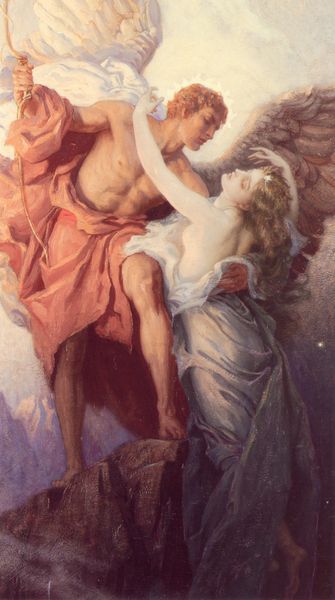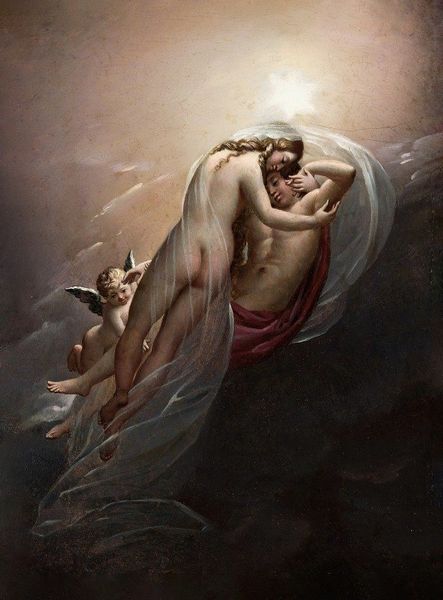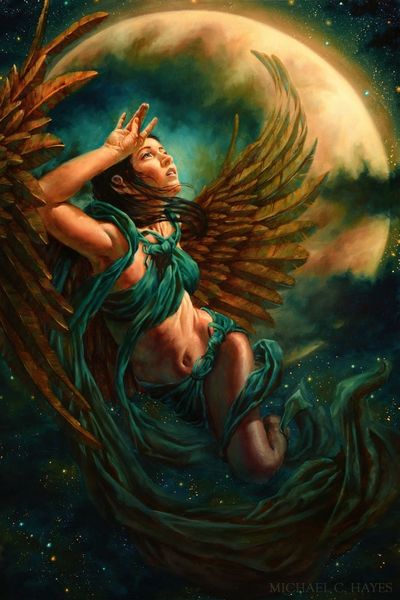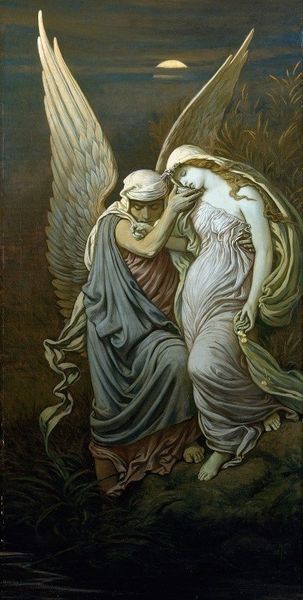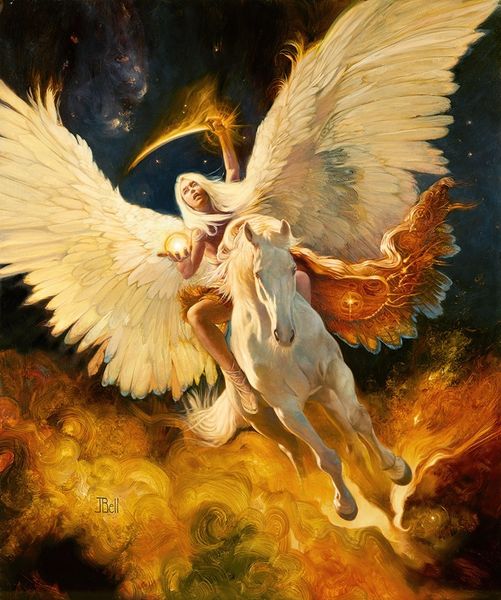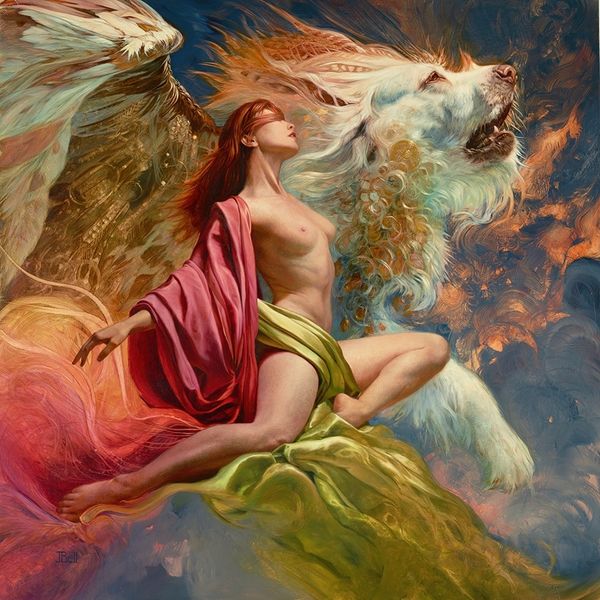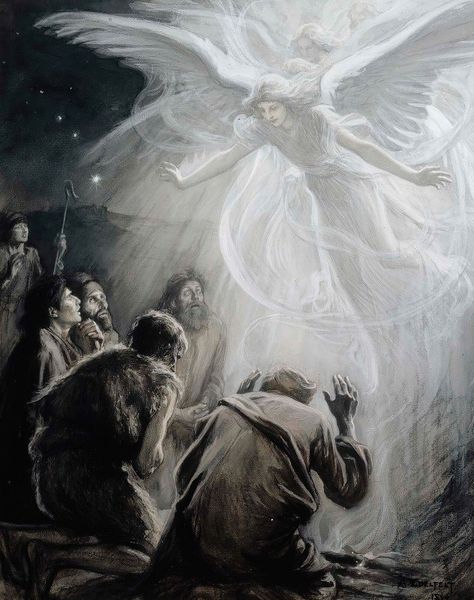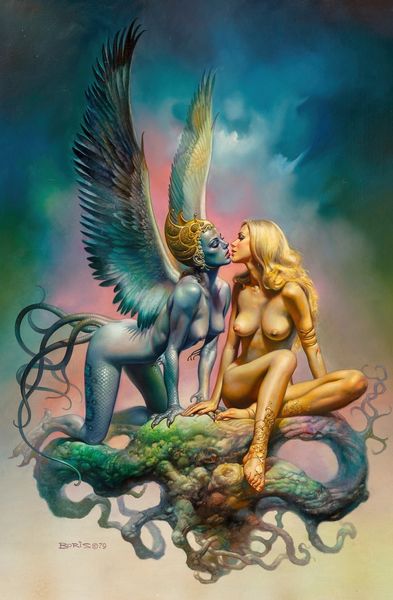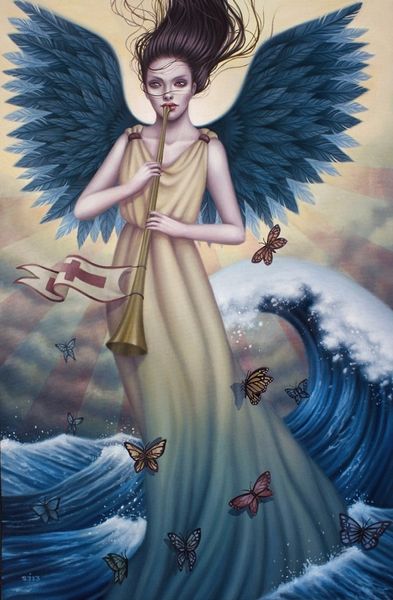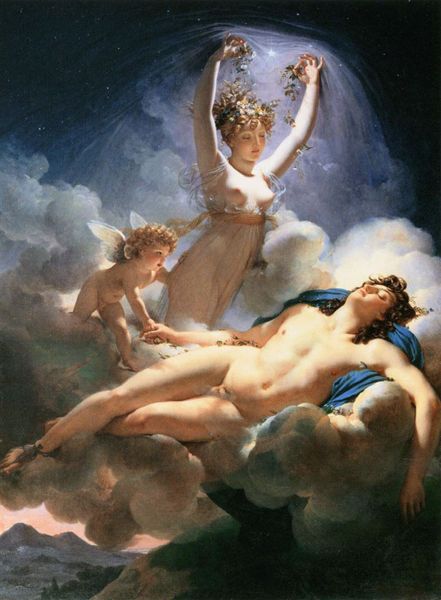
Copyright: Modern Artists: Artvee
Curator: Looking at Boris Vallejo's "Numdja" from 1990, executed in oil paint, I am immediately struck by how ethereal and… well, kind of swoon-worthy it is. Editor: Yes, the idealized forms floating amidst the dreamy clouds are indeed swoon-worthy, and potentially problematic in the hyper-sexualized visual rhetoric Vallejo is known for. Note the juxtaposition between the languid woman below and the couple intertwined on what looks to be a feathery cloud. Curator: Right? I mean, she's clearly lost in thought, maybe a reverie or dream. It’s as if the vision of the amorous pair above are the contents of her dream. The wings feel so delicate, and the figures, like marble statues come to life…though with significantly better tans. Editor: It’s worth considering how Vallejo’s artistic choices situate women here. The woman below, though seemingly the picture's focal point, exists in a state of passive contemplation. Then you have the angel, presented more as a possession than a lover. What narratives do such images perpetuate, particularly in fantasy art? Curator: Well, I can also see the allure of escape here. We're talking about fantasy art, after all. It feels romantic, offering an idealized vision. There's something inherently soothing in the way Vallejo uses light. The soft glow creates an aura of otherworldliness, a haven. The musculature gives off power, not hyper-masculinity to me. Editor: Perhaps, but is the promise of a fantasy world enough to overshadow the reinforcement of gendered power dynamics? The reclining nude is a common trope, often objectifying the female form for a male gaze. It is crucial to see this image, created in a time rife with challenges to dominant paradigms, as participating in a conversation of identity, desire and artistic authority. Curator: I take your point, and agree. But perhaps the romantic appeal resides in the desire to break free from those very power dynamics. Dreams, visions… those can represent aspirations, can’t they? Maybe the woman dreams to fly and that's what is important. Editor: Undoubtedly, such ambiguities are rich avenues for further analysis, encouraging viewers to engage critically with the aesthetics and implicit cultural statements within. Ultimately, it becomes an intellectual call-and-response between the artist and the viewer. Curator: So perhaps, even though it appears like a simple romantic tableau, this artwork invites a deep dive into how art shapes and reflects our inner desires.
Comments
No comments
Be the first to comment and join the conversation on the ultimate creative platform.

